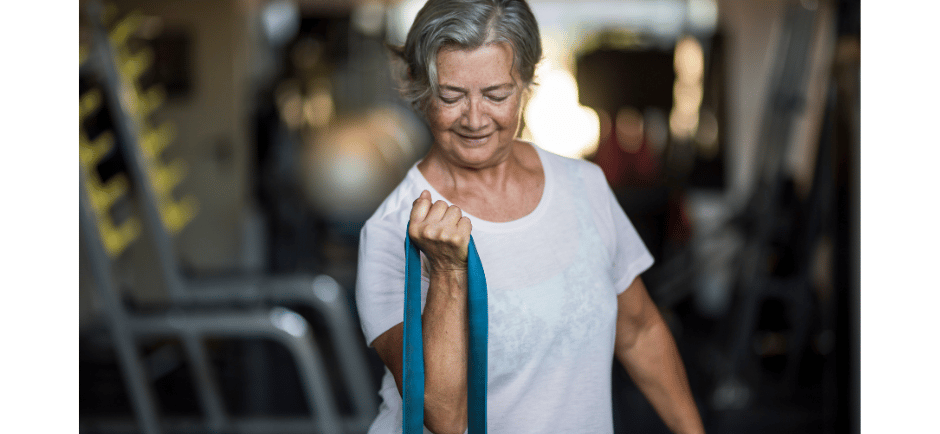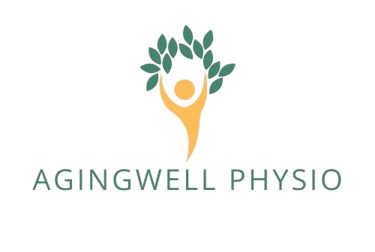Bone Strength Post Menopause
Tips on ways to keep your bones strong after menopause
Kelly K Veit, DPT
6/1/20253 min read


Let’s chat about our bones. We need them to move, sit, stand and walk. We also need them to stay as healthy as possible as we age. Bone mineral density is a term most postmenopausal women become familiar with. When calcium and other minerals in bone are dense, the bone is stronger and more resistant to breaks if you have an accident. But as we age or have medical complications, bones can lose that density. If too much density is lost, osteoporosis, brittle and weak bones, can develop. And that can lead to a serious potential for fractures that may occur even without an accident.
Current medical screening recommends a bone density test for women starting at age 65. But it’s been proven that bone density starts to decrease with the loss of estrogen and most women go through menopause in their 50’s. By the time you get screened at 65 it may be too late. Knowing that bone loss can start to occur during menopause, it’s a good idea to start working on preventing that bone loss early. But even if you are in your 60’s, 70’s, 80’s and older you can work to slow the loss of bone density and maybe even reverse it.
Start with a conversation with your physician. Get screened to know your current bone density score. This is a painless test called a DXA scan. It’s similar to an x-ray, but will measure the strength and mineral content of your bones, with a focus on your spine and hips. The whole procedure takes about 15 minutes. Once you have those results you can formulate a plan with your doctor. Treatments may include pharmaceuticals, diet changes, supplement use, lifestyle changes, and exercise!
Let’s talk about how bones grow. Bones become strong and more dense with weight bearing activities. This includes anything standing. Putting weight through your spine and legs puts stress on the bone that causes extra calcium deposits and can stimulate bone growing cells. This type of activity not only grows bone when you’re young, but keeps working as you get older to slow bone loss that can occur as your body goes through menopause and aging. Spending a lot of time sitting is not going to help your bones.
It’s not only weight bearing activities that can help your bones. When muscles are active, like with lifting, the stress placed on the muscle attachment at the bone also helps to stimulate bone growth. Regular exercise, including strength training is also proven effective to slow bone loss. An article published in 2022 in the Journal of Geriatric Physical Therapy (linked below) did a great job of summarizing the management for those with suspected or confirmed osteoporosis and provided clinical guidelines regarding exercise. The study looked at weight bearing exercises (the kind that help grow bone) in static and dynamic forms. This involves single leg stance for static and walking or tai chi for dynamic. It also reviewed non weight bearing exercises, such as in a seated and supported position. And then it looked at a combination of the two. Low force and high force exercises were also reviewed. Low force weight bearing would be walking, while high force would be jogging. In sitting, low force exercises would be light resistance and high repetitions. High force exercise in sitting would be progressive strength training meaning increasing weight as you go. The final recommendations for postmenopausal women are that a combination of low force weight bearing exercise and high force nonweight bearing exercises can reduce the loss of bone mineral density at the hip and the spine. To keep your bones as healthy as possible post menopause, a combination of exercise like walking/tai chi and supported resistance strengthening exercises is the way to go! Knowing how to do it safely to avoid injury is also important. Most fractures occur in the spine and hips with osteoporosis so no bending or twisting!
It may be time to rethink your lifestyle changes to keep your bones healthy and add in an exercise program if you are not already doing so. And if you are exercising, take a look at what you are doing. Does it include strength training? Are you positioning yourself to keep your spine and hips safe? Give yourself the best opportunity you can to keep those bones strong as you age. No time better than to start today.
Article Link: https://pmc.ncbi.nlm.nih.gov/articles/PMC8983944/#sec37
info@agingwellphysio.com
612-326-4110

